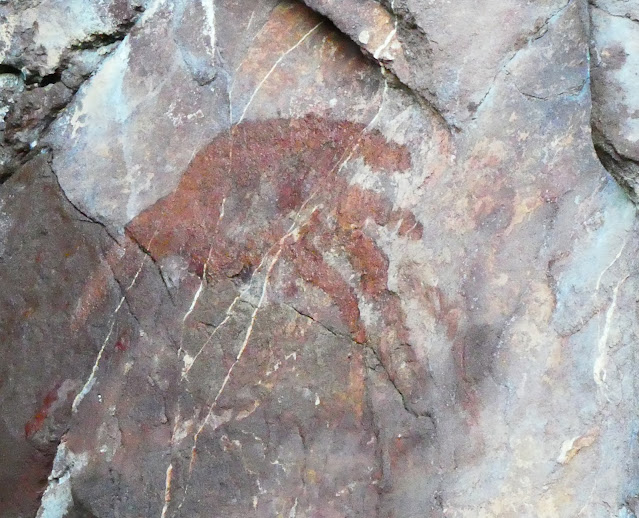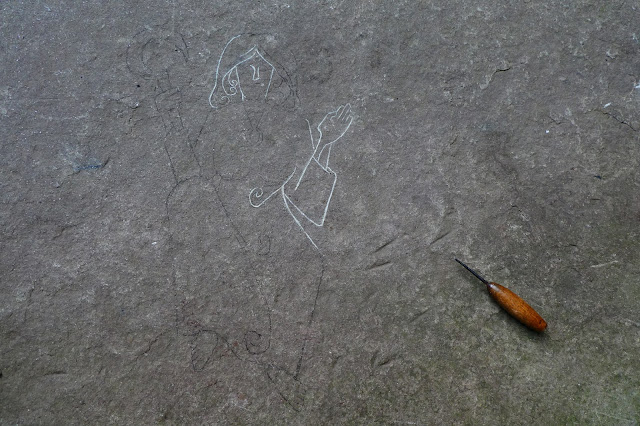The World, Its Peoples, and Their Gods
An overview of the mythical world(s) and those who inhabit them.
The main written body of this project is an epic poem, loosely informed by Old English literature and themes. Still in progress at this time of writing (May 27th), it sits at over 70,000 words (longer than Paradise Lost).
Under the working title 'The Gyldland Saga' it tells a complex interwoven narrative of heroic destinies, conflict and multi-racial, multi-cultural tensions and shaky alliances - major themes not entirely absent from real, contemporary concerns. The put-upon nation of Gyldland is home to humans (in a society roughly equivalent to the technological and cultural level of 8th-10th Century Northern Europe) and cat-people, Rockcats, of whom the main character is one.
In poetic style, the saga shifts between loosely-composed common and ballad metre – that used in English ballads and folk-songs, which hint at the specific Old English origins of the work through its names, poetic inspirations (kennings, litotes and word-play common to ancient heroic texts such as Beowulf), but which occasionally deviates completely into comparably longer, or shorter, lines for certain effect – as the Beowulf poet does to emphasize a moment of grave importance, in his case from 5 to 6 stressed lines.
The Ulfhednaar
In the Rockcat, the human races’ origin myth for these fierce dwellers in the frozen Northern wastes, is that
“for once, evil men, who raided far
would wear wolf-skins to terrify
all whom they fought: cursed by the gods,
their skins did merge. Wolf-men they then
became, and banished north, as outlaws,
lived in endless night, foes of life,
and thence begat the Ulfhednaar.”
This seems to be the human-centric view of the fearsome, foreign onetime-conquerors, as repeated by Gerthild, Womba’s rather dour but devoted female companion.
The Ulfhednaar, on the other hand, trace their lineage proudly back to the wolf-god Ulwarf, their great father. While Ulwarf shares some characteristics with the Norse wolf-son of Loki, Fenris, he is not subjected to the ‘fettered monster’ myth motif, being instead free to roam as he sees fit. (An anecdote relating early hostility between Ulwarf and the father of the Rockcat race, Ullek, is spoken by Womba: in which the two gods fought each other (‘like cat and dog’?!). In the battle, Ullek tore out Ulwarf’s tongue, which is why his people (the wolves) howl endlessly; and Ulwarf took from Ullek an eye, which he threw into the sky. The gods later made the eye into the Pole Star [or its fictional world equivalent] and thus a guiding light for the Rockcat people).
Occasionally, an outstandingly fearsome and successful warrior may be judged to have had Ulwarf himself enter him in spirit form to possess him on the battlefield, as in this praise heaped on one of Lord Hurran’s bodyguards:
“And Grunnr – so grim and strong,
he slashed the foe to blood and bone;
a tree of blades1, he spun with might,
his cries cut harder than enemy swords:
Ulwarf was in him, our lord’s champion.”
For a race for whom victory and glory in battle are held in highest esteem, they would appear to be wholly patriarchal – and to this end, they are, although their females seem to have sole jurisdiction over not just magic, but religion and ritual – as Ka-hrarr announces herself as ‘arch-druid of Ulwarf’, nothing less than a high priestess whose authority on matters relating to ritual is absolute: she herself decides the sacrifice of human slaves when the landvaettir visit the camp at Strend, and, with her opposite number from Hurran’s band, leads the mass ritual sacrifice just prior to the heroes’ first engagement with the enemy hordes, dedicating the blood to Ulwarf and thence to victory in the field. Whilst females rarely see active service in the Ulfhednaar lines, this could simply be due to their innate rare abilities of scrying being too valuable to risk in war. It should be noted that even in historically the most patriarchal society of Europe – ancient Greece – did women dominate religious ritual and festivals, with several feasts dedicated solely to them. In the Ulfish tradition, their women are feared and respected equally for their magical powers, meaning that each gender is rather assigned its best and most appropriate realm, a case of putting the best-qualified persons in the best job: the bigger, stronger males for physical combat, the less strong but clearer-minded (i.e., less prone to ‘berserk fury’) females for ritual, whose mysteries and complexities need to be unravelled with care and attention, rather than sundered with a big axe. However, notably an historical Ulfish battle-maid is alluded to by Ffrehkk:
“I heard, once, a woman of ours
led forces on the field – spearing, slashing,
she stormed the gates of Grithil-Lar;
a great many fell before her fearsome stride.
That was, I’ll vow, a mighty wife...”
That this character’s weapon appears to be a spear, rather than the traditional delgr2 (long axe, described as “twice Godfric’s height”), may signify that considerable physical strength is required to handle the Ulfish war-axe, even among males.
Background note: imagery and attitudes attached to the Ulfish people are derived in part from the historical Norsemen, and also from Black Metal music imagery - the concept of the realm of the Evermoon/Evernight where no sun ever rises; the hostile landscape and natural forces which are nonetheless celebrated and embraced; and the 'eternal darkness' motif generally. The guttural, throaty Ulfish language has analogues in the rasping, shrieking vocal performances characteristic of BM music.
1The image of a warrior being said to be a ‘tree of blades’ is derived from Old Norse – moving so fast, his sword (or axe) appears to multiply. The same imagery is still applied in comic animations and cartoons.
2 Derived from PIE del-3, whence Old Norse telgja “hew, cut out”, talga “the cutting, carving” - Pokornoy, p.574.


Comments
Post a Comment